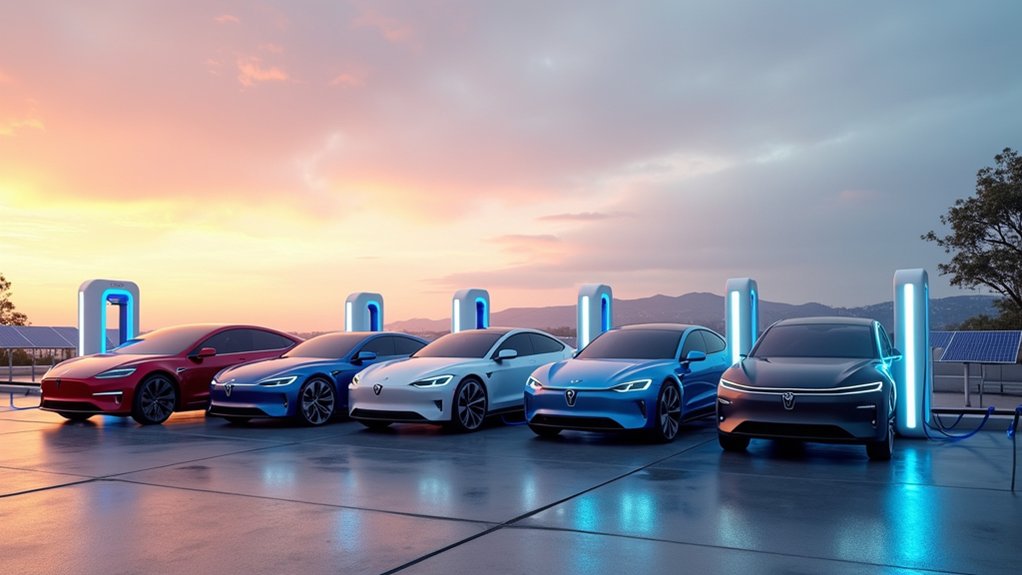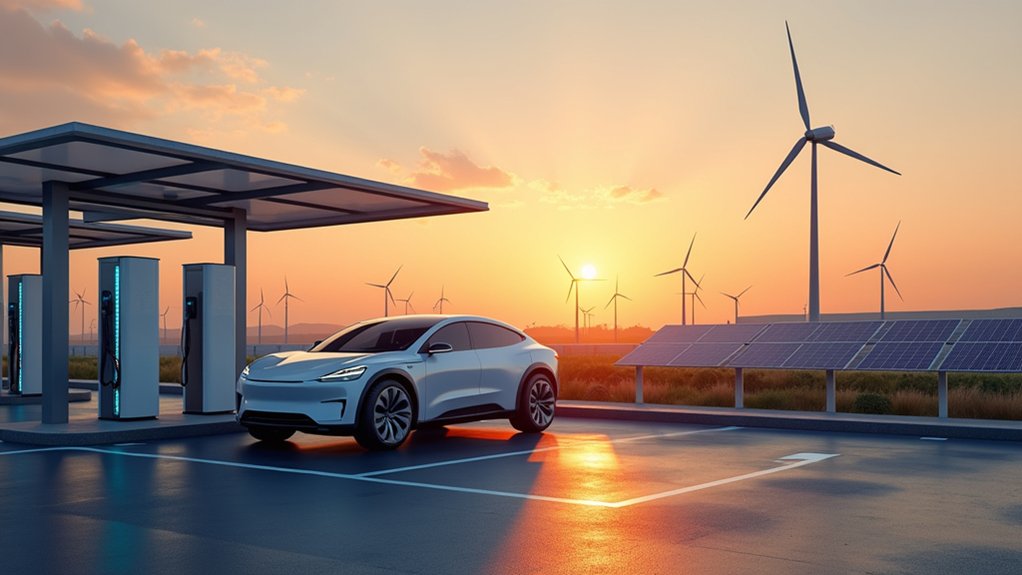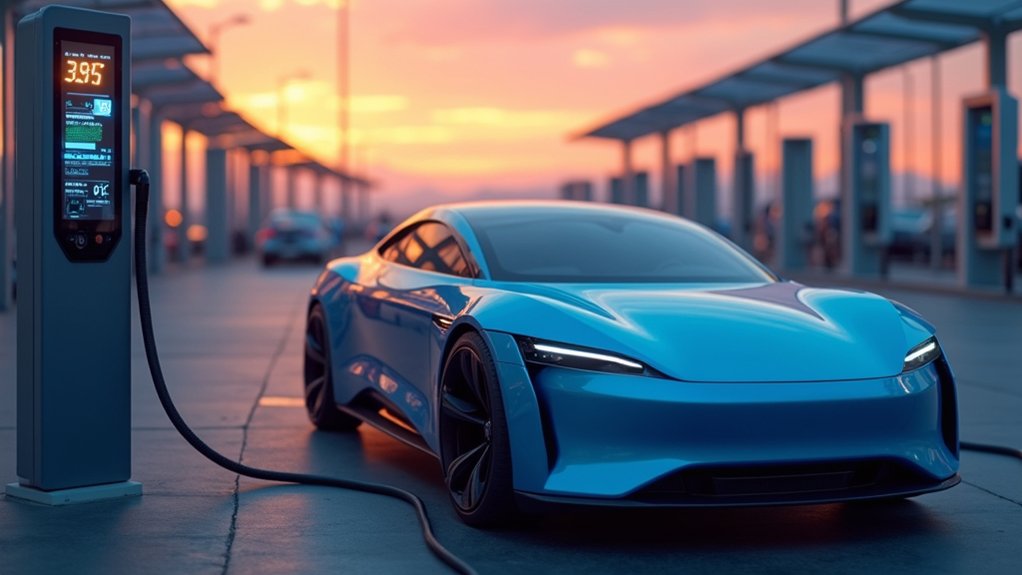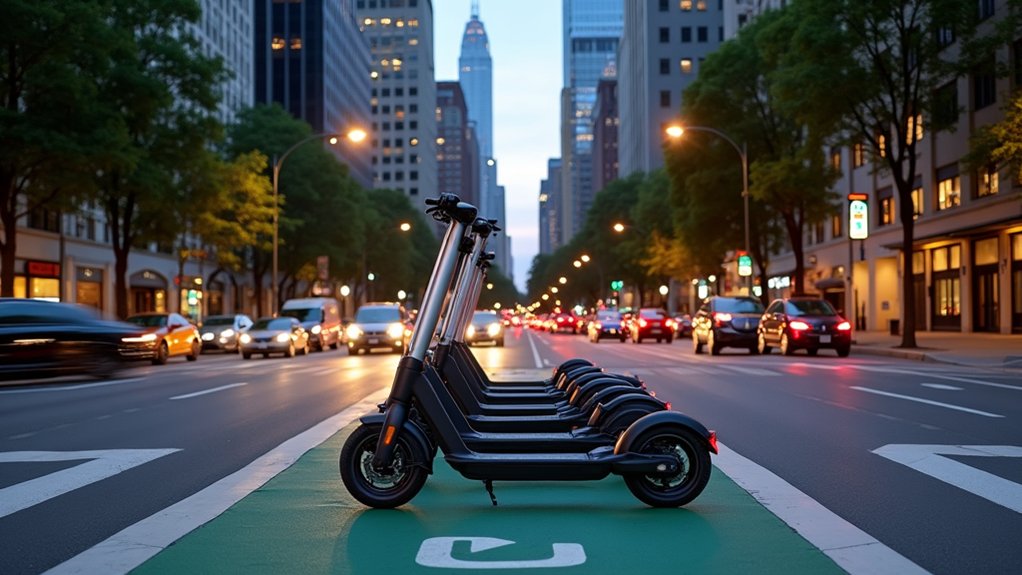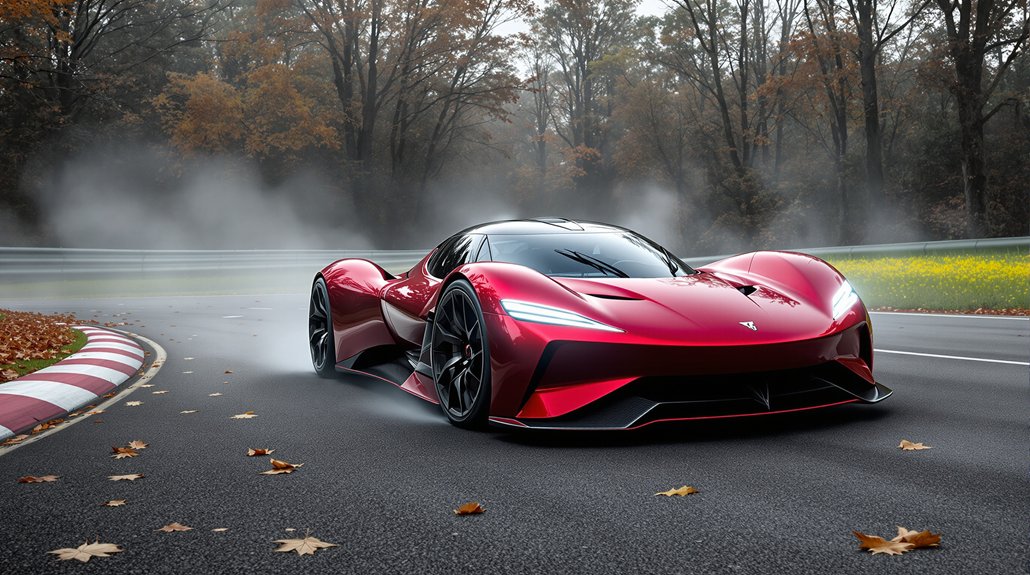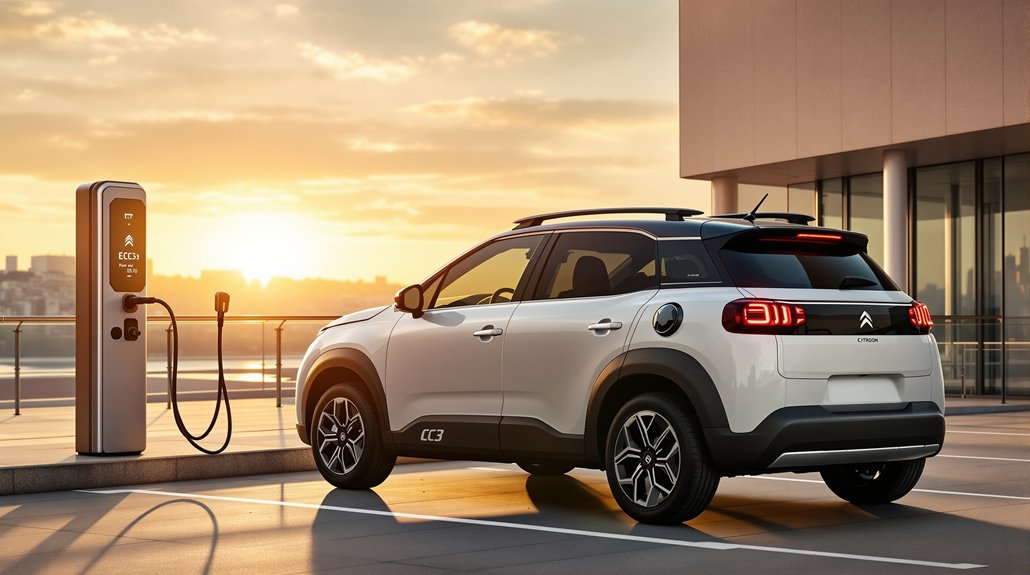The 2025 electric vehicle landscape showcases remarkable innovation across diverse segments. Tesla’s Model S Plaid+ leads with an industry-best 520-mile range and enhanced autonomous capabilities. BMW’s i5 delivers 402 horsepower through its dual-motor setup, while the aerodynamic Hyundai Ioniq 6 achieves an impressive 0.21 drag coefficient. The Volkswagen ID.7 introduces bidirectional charging, and Ford’s Mustang Mach-E GT Plus sprints 0-60 in 3.2 seconds. Each model reveals unique technological breakthroughs worth exploring further.

As the automotive industry accelerates toward an electric future, 2025 stands out as a pivotal year for EV innovation and consumer choice. The market has matured considerably, offering consumers an unprecedented range of options that combine cutting-edge technology with practical functionality.
Having analyzed the latest models, I’ve observed that manufacturers have made remarkable strides in addressing previous limitations of range anxiety and charging infrastructure. Comprehensive reliability testing data from Consumer Reports helps validate these improvements.
Tesla continues to dominate the premium segment with its Model S Plaid+, featuring a groundbreaking 520-mile range and autonomous driving capabilities that surpass previous generations. The vehicle’s neural network processing power has doubled, enabling smoother navigation through complex urban environments. The company’s entry-level Model 3 offers exceptional efficiency and performance while providing easy access to Tesla‘s extensive charging network.
Tesla’s Model S Plaid+ redefines electric luxury with unmatched range and AI-driven autonomy, setting new standards for premium EVs.
BMW’s i5 emerges as a strong contender, blending traditional German engineering with electric innovation. Its dual-motor configuration delivers 402 horsepower while maintaining an impressive 380-mile range.
The Hyundai Ioniq 6 represents a notable leap forward in the mid-range market, offering a compelling mix of efficiency and performance. With its aerodynamic design achieving a 0.21 drag coefficient, it maximizes range while delivering responsive handling. Growing supply chain stability has enabled manufacturers to meet increasing consumer demand.
Volkswagen’s ID.7 stands out for its practical approach to electric mobility, featuring bidirectional charging capability and an intuitive user interface that simplifies the shift from conventional vehicles.
Ford’s Mustang Mach-E GT Plus rounds out the top offerings with performance figures that would make traditional muscle car enthusiasts take notice. The latest iteration boasts a 0-60 mph time of 3.2 seconds while incorporating advanced battery thermal management for consistent performance.
Smart integration allows seamless connectivity with home automation systems and predictive charging based on user patterns.
These vehicles demonstrate the industry’s commitment to advancing electric mobility beyond mere environmental considerations. Each model offers distinct advantages, from Tesla’s technology leadership to BMW’s luxury execution, Hyundai’s value proposition, Volkswagen’s practicality, and Ford’s performance heritage.
The incorporation of standardized charging protocols and improved battery chemistry has effectively eliminated many previous barriers to EV adoption, making 2025’s lineup the most compelling to date.
Frequently Asked Questions
How Long Does It Take to Fully Charge an Electric Car at Home?
Charging time at home varies considerably based on the charging level installed.
With a standard Level 1 (120V) outlet, full charging typically takes 40-71 hours.
Installing a Level 2 (240V) home charging system reduces this to 4-24 hours, depending on battery capacity and power output.
Level 2 charging, while requiring professional installation averaging $1,616, represents the most practical home charging solution for daily EV use.
What Happens to Electric Car Batteries When They Reach End of Life?
Electric car batteries typically follow two paths at end-of-life: recycling or second-life applications.
Specialized facilities dismantle batteries to recover valuable materials like nickel, cobalt, and lithium through processes such as hydrometallurgy.
Alternatively, batteries retaining 70-80% capacity find new purpose in stationary energy storage systems, powering solar farms or providing backup power solutions.
This dual approach maximizes resource utilization while minimizing environmental impact through proper disposal methods.
Are Electric Cars More Expensive to Insure Than Regular Vehicles?
Electric vehicles typically cost 3-12% more to insure than conventional cars, primarily due to higher repair and replacement costs.
While EV premiums averaged 15-23% higher historically, the gap has narrowed to roughly $1,607 annually in 2025, matching traditional vehicle rates.
Expensive components like batteries ($5,000-$20,000), specialized labor requirements, and higher vehicle values contribute to elevated insurance costs, though advanced safety features partially offset these factors.
Can Electric Cars Be Charged Using Regular Household Electrical Outlets?
Electric vehicles can indeed be charged using standard 120V household outlets, known as Level 1 charging.
This method delivers approximately 3-5 miles of range per hour, making it suitable for overnight charging and drivers with short commutes.
While considerably slower than Level 2 charging options, regular outlets provide a convenient, no-installation solution that works with every mass-produced EV’s included charging cable, though careful monitoring of electrical systems is recommended.
How Does Extreme Weather Affect Electric Car Battery Performance and Range?
Extreme weather greatly impacts EV battery performance and range.
In cold conditions around -4°F, battery range can decrease by up to 50% due to slower chemical reactions and increased energy demands for cabin heating.
Similarly, high temperatures near 95°F reduce range by 17-31% through air conditioning usage.
Battery efficiency suffers in both scenarios, with cold weather hampering regenerative braking and heat accelerating battery degradation through increased chemical activity.
